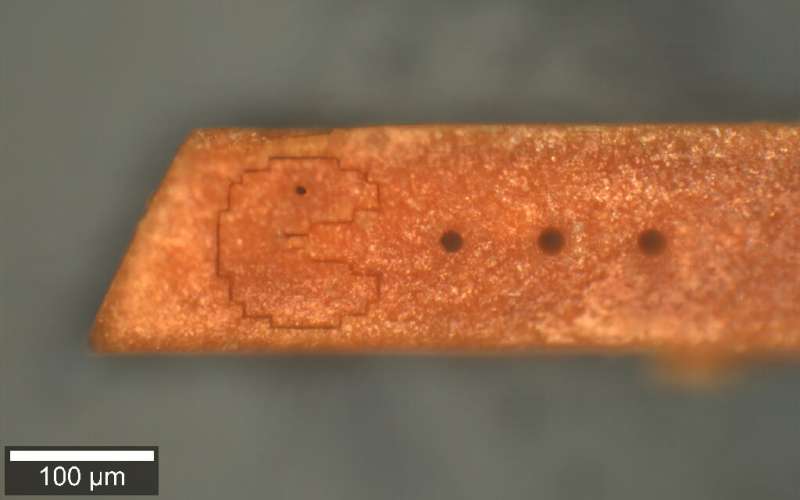A gentler, more precise laser cutting technique

Laser cutting techniques are usually powered by high energy beams, so hot that they melt most materials. Now scientists from McGill University have developed a gentler, more precise technique using low-power visible light.
The new process called 'cold photo-carving' uses a fraction of the energy required in traditional laser cutting techniques. "We engineered crystal building blocks that can be cut by low-power light with amazing precision. Unlike traditional heat cutting methods, sculpting down to a resolution of nanometers is possible with our approach because light can be focused more precisely than heat can," says Professor Tomislav Friščić of the Department of Chemistry.
According to the researchers, the new technique could also be used to engrave complex patterns into surfaces. "Imagine taking the famous geoglyphs in the Nazca Desert in Peru and engraving that pattern at a million-times the reduced size," say Professor Friščić. The researchers hope that the new approach could one day be developed to create new materials like metals or ceramics that are easily shaped or cut using low-power light and are now looking at potential applications in solar cell materials.
"Cold photo-carving of halogen-bonded co-crystals of a dye and a volatile co-former using visible light" by T. H. Borchers et al. was published in Nature Chemistry.
More information: T. H. Borchers et al, Cold photo-carving of halogen-bonded co-crystals of a dye and a volatile co-former using visible light, Nature Chemistry (2022). DOI: 10.1038/s41557-022-00909-0
Journal information: Nature Chemistry
Provided by McGill University




















